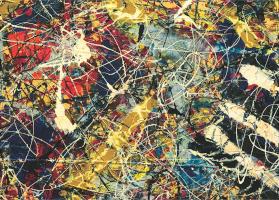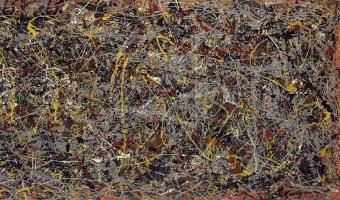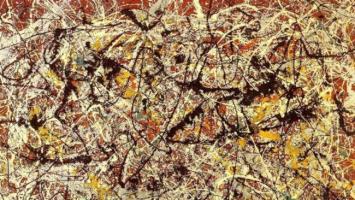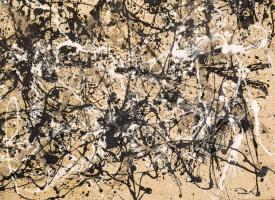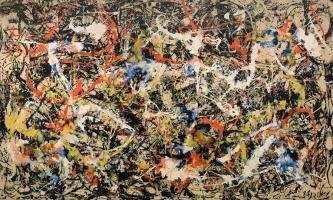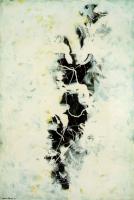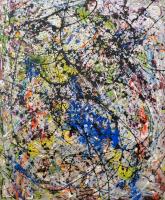Jackson Pollock
Jackson Pollock was born on a farm in Wyoming, and his childhood was spent in Arizona and California. He studied art in Los Angeles and New York, and worked for the Federal Arts Project, a government-funded programme for artists which was part of President Roosevelt’s New Deal to combat the Depression. He was killed in a car accident in his early forties, but he has left a legacy of over a thousand paintings. His subjects were abstract, and he was the greatest American exponent of Action Painting. Pollock underwent psychoanalysis, and his pictures seem to involve a release of tensions, as if he is allowing things to emerge from the depths of his subconscious.
His technique was unconventional : he spread a length of unprimed canvas on the floor, instead of stretching it in the usual way, and tacked it to the boards. He said, ‘On the floor I am more at ease. I feel nearer, more a part of the painting, since this way I can walk round it, work from the four sides, and literally be in the painting.’ He abandoned the use of brushes, and splashed or poured the paint straight on to the cloth. He wanted nothing to come between him and the colour itself. He felt that the painting had a life of its own, and if things went well it would come through. ‘My painting is direct… I want to express my feelings rather than illustrate them… When I am painting I have a general notion as to what I am about. I can control the flow of paint: there is no accident… .’
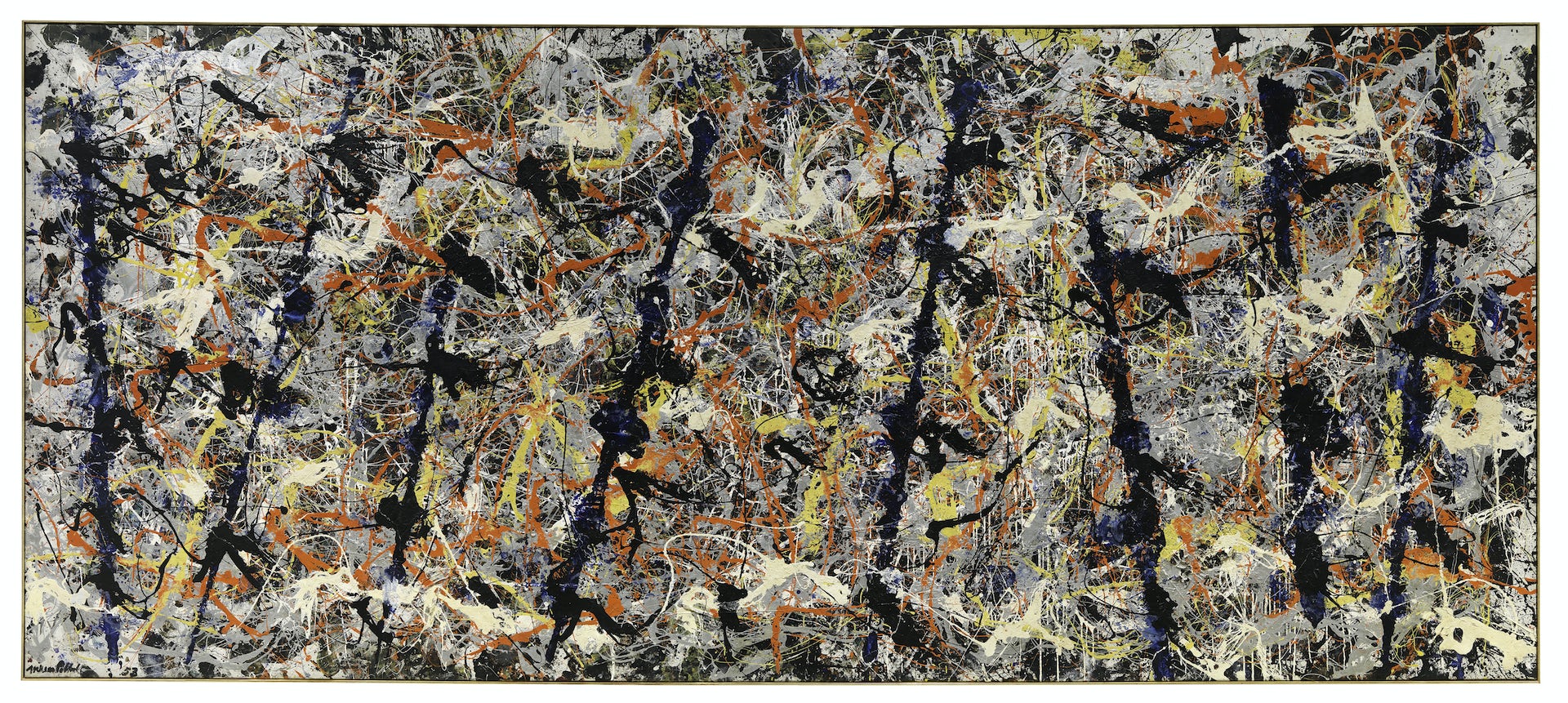 The results are dramatic. Blue Poles, like many of his paintings, is very
large. Skeins and streaks of brilliant colour weave a web in which one is
almost engulfed. There are no recognizable forms depicted, and the spectator is
free to interpret the result in whatever way he likes. It is different for each
person each time he looks at it; and this changeable quality adds to its energy
and vitality.
The results are dramatic. Blue Poles, like many of his paintings, is very
large. Skeins and streaks of brilliant colour weave a web in which one is
almost engulfed. There are no recognizable forms depicted, and the spectator is
free to interpret the result in whatever way he likes. It is different for each
person each time he looks at it; and this changeable quality adds to its energy
and vitality.
The purchase of Blue Poles by Australia’s relatively new National Gallery was controversial : the price of two million dollars was thought to be high. Yet Pollock made a new and inventive contribution to modern art : he devised a method of painting in which old conventions are set aside and new disciplines imposed, and the result is spontaneous, stimulating and adventurous.


